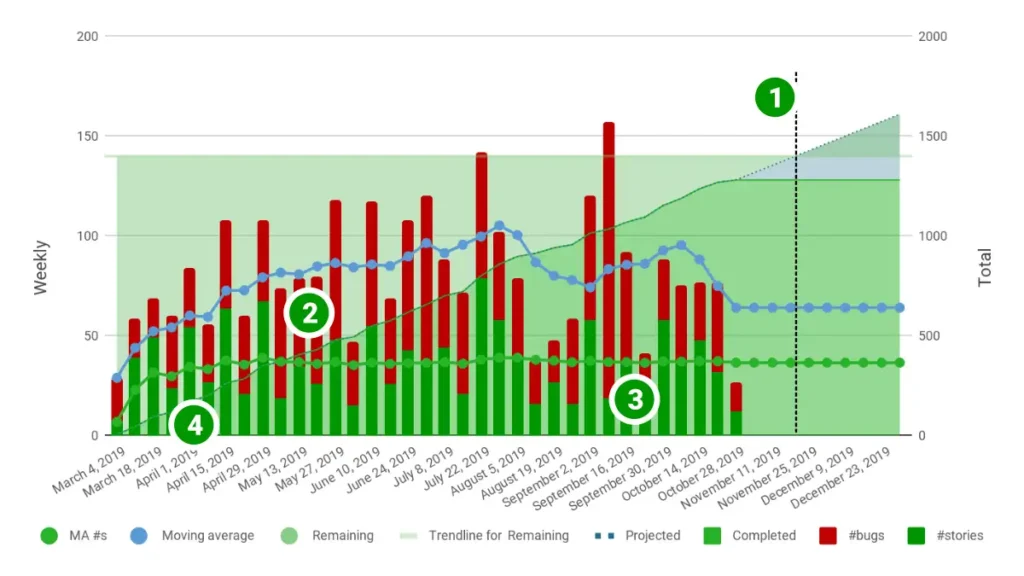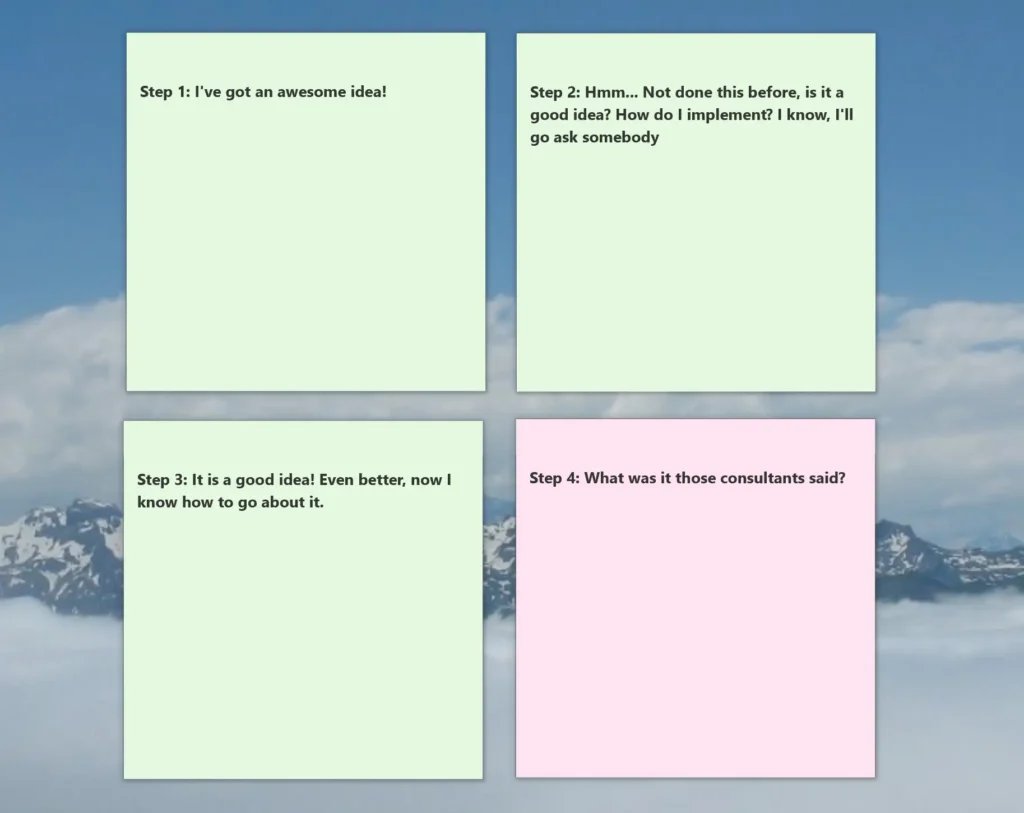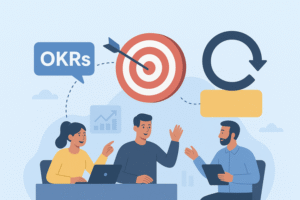You have an idea, a spark, concept of how your organization could do things better. Now all you need is to work out how. A typical pattern from here is:
- Realize you need more information or organizational buy-in
- Engage consultants to show you how
- Consultants leave
- You implement and realize all your goals!
Except step 4 so often doesn’t happen. You have the report, you’ve confirmed what you thought and have a solid plan, but at execution, everything goes wrong.
So what can you do to help your idea succeed once the consultants are gone?
What goes wrong
Often it is not bad advice causing your great idea to fail at execution. Before it has even had a chance to take a breath it has an uphill battle. The status quo of the organization might not agree, and many competing activities also have merit. Even if you win this battle and your idea is determined to be one that moves forward, you need to determine if you have the right skills and resources to deliver.
So what’s an approach to do things better?
There are a few approaches we can take when creating a path forward.
After we have engaged the consultants to provide a roadmap to work from, we can ask them to stick around and help implement. This is helpful, but it will be hard to get teams committed to the idea of why they should change. Often a consulting only approach results in a fall off of performance over time as consultants leave to go to their next engagement, and the organization reverts to previous practices.
Alternatively, instead of handing the execution to consultants, we could transform your teams using coaches. However, if the company does not comprehend what is necessary to move forward or is committed to focusing in the wrong area, coaching alone also has difficulty in creating change. In a large organization, where there are often not enough coaches to go around, this can be especially true.
A third conventional approach is to combine the two and build the necessary skills by coaching your teams while consultants provide guidance and information where skills are lacking until your teams can deliver the transformation. This still leaves the problem of a lack of coaches, where building a coaching culture within your organization can help resolve this. Not everybody will make a good coach, but those that do will amplify your transformation.
Coaching down and coaching up
Culture plays a critical role in ensuring your transformational change is implemented. Coaching can play a crucial role in this, but it needs to occur at all levels of the organization. A common example is a need to change the leadership team’s approach to prioritizing work. Looking at long term wins over short term gains can be hard when your schooling, company KPIs and own leadership demand otherwise. So to make any real progress, as we coach the teams, we must coach the leadership in what these changes will mean for them. It is one thing to say “we want to be Agile” and a whole different thing to realize you need to be a part of that change too.
Make it measurable
Identifying and tracking critical metrics is a valuable way to keep the transformation on track. Especially when adopting Agile frameworks such as Scrum, you need to be careful to be looking at the right information. Our blog post on throughput is a good place to start.
Xodiac can also help you visualize where you are at using our Socrates tooling. We can very easily capture information from whatever system you use to track your work and provide you insights into how your teams are delivering. Contact us if you are interested, we can often do this for free, and the insights we gather are something companies find highly valuable.

Summing up
Real organizational change requires continual effort, buy-in from leadership and driven by taking a data-driven approach. Making it stick requires an open mind and the ability to rethink our existing ways of working. Beyond the initial roadmap, the organization should consider how it delivers value to customers and prioritizes strategic decisions.
Three things to ask yourself:
- What would a dynamic roadmap for your journey look like?
- How could you develop the skills you need to succeed?
- What metrics are you using to track the transformation?




